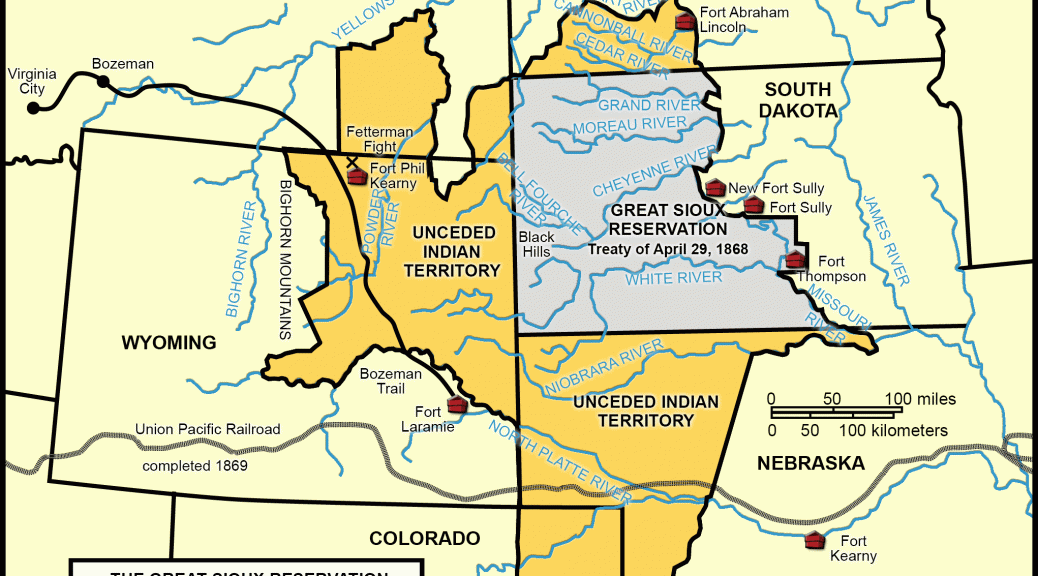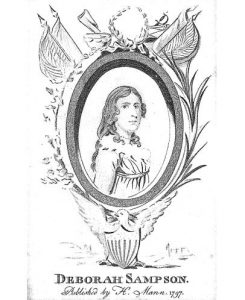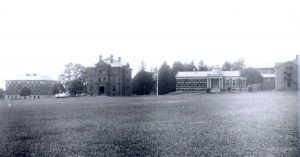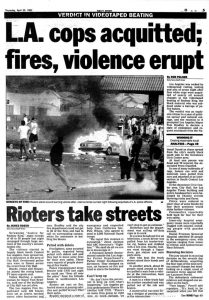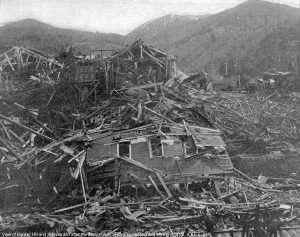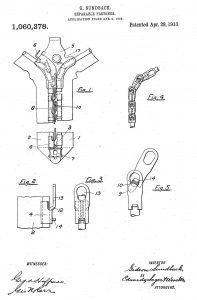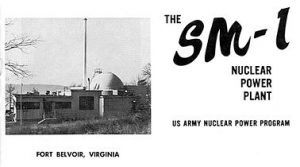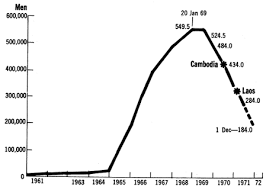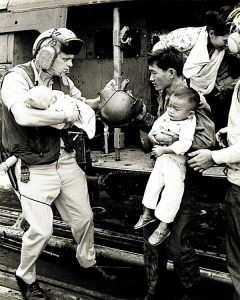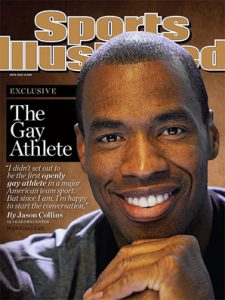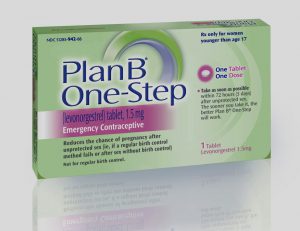April 29 Peace Love Art Activism
Feminism
Deborah Samson
April 29, 1827: Deborah Samson died at the age of 66. She is buried in Rock Ridge Cemetery in the town of Sharon, Massachusetts.(see Samson for expanded story)
Robert Dale Owen
In 1832: Robert Dale Owen issued the following statement on the occasion of his wedding to Mary Jane Robinson, to protest the state of law by which women lost property and other legal rights upon marriage.
Of the unjust rights which in virtue of this ceremony an iniquitous law gives me over the person and property of another, I cannot legally, but I can morally, divest myself. And I hereby distinctly and emphatically declare that I consider myself, and earnestly desire to be considered by others, as utterly divested, now and during the rest of my life, of any such rights, the barbarous relics of a feudal, despotic system. (Evansville dot edu article) (see Feminism August 30, 1835)
April 29 Peace Love Art Activism
BLACK HISTORY
Ashmun Institute
April 29, 1854: by an act of the Pennsylvania legislature, Ashmun Institute, the first college founded solely for African-American students, was officially chartered. The Institute was named after Jehudi Ashmun, the U.S. agent who helped reorganize and preserve the struggling African-American colony in Africa that later grew into the independent nation of Liberia. The Ashmun Institute, chartered to give theological, classical, and scientific training to African Americans, opened on January 1, 1857, and John Pym Carter served as the college’s first president. In 1866, the institution was renamed Lincoln University. (Lincoln University article) (see May 1854)
James T Scott lynched
April 29, 1923 a week after authorities arrested James T Scott for allegedly sexually assaulting the 14-year-old daughter of Missouri University German professor Hermann Almstedt, a mob forcibly removed the door from Scott’s cell in the Boone County Jail and marched him to a bridge near Stewart and Providence roads. A rope was placed around Scott’s neck, and he was hanged from the bridge before a hundreds of people without any opportunity to plead his case in court. [Missourian article] (ext BH, see June 21; next Lynching, see July 13 or see AL3 for expanded chronology of early 20th century lynching)
Ford T. Johnson, Jr
April 29, 1963: in April 1962, Ford T. Johnson, Jr. appeared in a Richmond, Virginia, city traffic court and was convicted of contempt because he refused to sit in the segregated courtroom’s “Negro” section. Mr. Johnson was unaware of the segregated seating and first sat in a section reserved for whites. When ordered to move, Mr. Johnson refused the judge’s order to re-seat himself in the black section and said he would prefer to stand. He was immediately convicted of contempt and fined ten dollars.
When Mr. Johnson appealed, the Virginia Supreme Court ruled his conviction was “plainly right.” He then appealed to the United States Supreme Court, which agreed to hear the case. The State of Virginia admitted that the Richmond traffic court maintained a segregated seating policy but argued the policy was irrelevant and Mr. Johnson’s contempt conviction was justified because he disobeyed a judge’s order.
The Supreme Court disagreed. Reasoning that one could not be held in contempt for refusing to comply with unconstitutional segregation rules, the Court unanimously overturned Mr. Johnson’s conviction on April 29, 1963, in Johnson v. Virginia. The majority opinion declared that “such a conviction cannot stand, for it is no longer open to question that a State may not constitutionally require segregation of its public facilities.” The decision was lauded by civil rights activists nationwide. The Richmond Afro-American newspaper hailed it as a “ruling against this long injustice practiced in what are supposed to be chambers of impartial justice.” (Cornell Law School article) (see May 2)
Rodney King
April 29, 1992: the four white LAPD officers [Sgt. Stacey Koon and officers Laurence Michael Powell, Timothy Wind, and Theodore Briseno] were acquitted of beating King. Riots start at the intersection of Florence and Normandie in South Central Los Angeles. Reginald Denny, a white truck driver, was pulled from his truck and beaten. A news helicopter captured the beating on videotape. Gov. Pete Wilson declared a state of emergency and called in National Guard troops. (see April 30 – May 4)
Baltimore riots continue
April 29, 2015: (from the NYT) aided by wide support from residents, activists, pastors and local leaders, and by thousands of police and National Guard reinforcements, an overnight curfew appeared to quell the unrest that had gripped this city earlier in the week.
The quiet, mostly deserted streets — even in the Penn-North area that was the locus of rioting and looting on Monday — stood in sharp contrast to the blazes that had raged the night before and had strained the city’s Fire Department as engines and crews raced from fire to fire.
Backstopped by 2,000 National Guard members, as well as officers from the state police and other law enforcement departments from outside the city, the Baltimore police appeared to exercise strategic discretion over the course of the night and did not seem particularly eager to aggressively pursue curfew violators if they did not have to. (next BH, see May 1; next Race Revolt, see November 13, 2023)
April 29 Peace Love Art Activism
Native Americans
The Treaty of Fort Laramie
April 29, 1868: The Treaty of Fort Laramie (also called the Sioux Treaty of 1868) was an agreement between the United States and the Oglala, Miniconjou, and Brulé bands of Lakota people, Yanktonai Dakota and Arapaho Nation. Signed at Fort Laramie in the Wyoming Territory, it guaranteed the Lakota ownership of the Black Hills, and further land and hunting rights in South Dakota, Wyoming, and Montana. The Powder River Country was to be henceforth closed to all whites. The treaty ended Red Cloud’s War. Link to text of treaty. (see June 1, 1868)
April 29 Peace Love Art Activism
US Labor History
Bunker Hill explosion
April 29, 1899: an estimated one thousand silver miners, angry over low wages, the firing of union members and the planting of spies in their ranks by mine owners, seized a train, loaded it with 3,000 pounds of dynamite, and blew up the mill at the Bunker Hill mine in Wardner, Idaho. (Rural Northwest dot com article) (see July 20)
Silent Parade
April 29, 1914: Upton Sinclair and his wife organize a “Silent Parade” in front of Rockefeller’s New York Standard Oil offices to protest the Ludlow massacre (see April 20, 1914). Sinclair is arrested along with four women. (see June 28, 1914)
April 29 Peace Love Art Activism
Technological Milestone
April 29, 1913: the zipper was patented by Gideon Sundback. (see January 14, 1914)
April 29 Peace Love Art Activism
McCarthyism
Owen Lattimore
April 29, 1950: in response to Senator Joseph McCarthy’s charge that Owen Lattimore was a top Soviet spy in the US, Secretary of State Dean Acheson and three former secretaries of state denied that Lattimore had any influence on U.S. foreign policy.
Senator McCarthy was asked to appear before a subcommittee of the Senate Foreign Relations Committee to provide details about his accusation. During the course of the hearing, the senator charged that Owen Lattimore was a top spy for the Soviet Union and had been “the principal architect of our Far Eastern policy.” The implication of McCarthy’s testimony was clear: Lattimore, acting as a virtual Soviet agent, had helped design a policy that resulted in the loss of China to the communists in 1949. In fact, Lattimore, a well-known specialist in the field of Chinese history, had merely served as a consultant to the Department of State during and after World War II. Like many others, he had come to the conclusion that the Nationalist Chinese government of Chiang Kai-Shek was hopelessly inefficient and corrupt, and that continued U.S. support of such a government was useless. In the harsh Cold War atmosphere of America, though, the “loss” of China to the communists encouraged suspicion that spies and sympathizers were to blame.
Secretary of State Dean Acheson and three former secretaries of state, Cordell Hull, James Byrnes, and George C. Marshall, asked whether the accusations were true, answered that Lattimore had absolutely no impact on U.S. foreign policy toward Asia. Indeed, each of them went to great lengths to make clear that they had never even met Lattimore. Byrnes and Marshall went further, declaring McCarthy’s charges were particularly harmful to America’s foreign relations. Lattimore was later cleared by a congressional investigation in 1950, but in 1951-1952 the attacks against the professor were renewed and he was charged with perjury in connection with his 1950 testimony. These charges were eventually dismissed, but not before Lattimore’s academic career in the United States had been destroyed. (see May 29, 1950)
April 29 Peace Love Art Activism
Nuclear/Chemical News
Nuclear power plant
April 29, 1957: the first military nuclear power plant was dedicated in Fort Belvoir, Virginia. (see May 18)
Chemical weapon ban
April 29, 1997 a worldwide treaty to ban chemical weapons went into effect. (next N/C N, see May 11, 1998; ban, see July 6, 2023)
North Korea
April 29, 2018: the South Korean government said that North Korea’s leader, Kim Jong-un, had told President Moon Jae-in that he would abandon his nuclear weapons if the United States agreed to formally end the Korean War and promise not to invade his country. (see May 8)
April 29 Peace Love Art Activism
April 29 Music et al
Andrew Loog Oldham
April 29, 1963, 19-year-old Andrew Loog Oldham signed a contract with The Rolling Stones, becoming their manager. Oldham had seen the band in concert the previous day at the Crawdaddy Club in London.
Hair
April 29, 1968: The American Tribal Love-Rock Musical opened at the Biltmore Theater on Broadway. The inspiration to include nudity came when the authors saw an anti-war demonstration in Central Park where two men stripped naked as an expression of defiance and freedom, and they decided to incorporate the idea into the show. The show featured the songs ‘Aquarius / Let the Sunshine In’, ‘Good Morning Starshine’ and the title song. The production ran for 1,729 performances, closing on July 1st, 1972. (see March 11, 1969)
Mayor John Lindsay
April 29, 1972: NYC Mayor John Lindsay wrote a letter to the Immigration and Naturalization Service calling the deportation proceedings against John Lennon and Yoko Ono, “a grave injustice.” (see Lennon for expanded chronology)
Albert Hofmann
April 29, 2008: Swiss inventor of LSD, and discoverer of the active principles of magic mushrooms and morning glory seeds, Albert Hofmann, passed away from heart failure. He was 102 years old. (next LSD, see March 4, 2014; see Hofmann for expanded story)
April 29 Peace Love Art Activism
Vietnam
Troop level
April 29, 1966: U.S. troops in Vietnam total 250,000. (see May 15)
Cambodian Invasion
April 29, 1970: South Vietnamese troops attack into Cambodia, pushing toward Vietcong bases. Two days later, a U.S. force of 30,000 — including three U.S. divisions — mount a second attack. Operations in Cambodia last for 60 days, and uncover vast North Vietnamese jungle supply depots. They capture 28,500 weapons, as well as over 16 million rounds of small arms ammunition, and 14 million pounds of rice. Although most Vietcong manage to escape across the Mekong, there are over 10,000 casualties. [timeline] (see Apr 30)
Casualty figures
April 29, 1971: U.S. casualty figures for April 18 to April 24 released. The 45 killed during that time brought total U.S. losses for the Vietnam War to 45,019 since 1961. These figures made Southeast Asia fourth in total losses sustained by the U.S. during a war, topped only by the number of losses incurred during the Civil War, World War I, and World War II. (see May 1)
Operation Frequent Wind
April 29, 1975: Operation Frequent Wind, the largest helicopter evacuation on record, began removing the last Americans from Saigon.U.S. Marines and Air Force helicopters, flying from carriers off-shore, begin a massive airlift. In 18 hours, over 1,000 American civilians and almost 7,000 South Vietnamese refugees were flown out of Saigon. Charles McMahon and Darwin Lee Judge, two U.S. Marines, were killed in a rocket attack at Saigon’s Tan Son Nhut airport. They were the last Americans to die in the Vietnam War. McMahon, 11 days short of his 22nd birthday, was a corporal from Woburn, Massachusetts. Darwin Judge was a 19-year-old lance corporal from Marshalltown, Iowa. (see Apr 30)
April 29 Peace Love Art Activism
CLINTON IMPEACHMENT
April 29, 1998: a federal judge ruled that Monica Lewinsky did not have an immunity agreement with Ken Starr. (see Clinton for expanded story)
April 29 Peace Love Art Activism
LGBTQ
Rep Virginia Foxx
April 29, 2009: the U.S. House of Representatives debated expansion of hate crimes legislation. During the debate, Representative Virginia Foxx of North Carolina called the “hate crime” labeling of Shepard’s murder a “hoax”. Shepard’s mother was said to be in the House gallery when the congresswoman made this comment. (NBC News follow-up article) (LGBTQ see May 6; Hate Crime Act, see Oct 28)
BSA
April 29, 2013: Houston-area Boy Scout officials voted to continue a policy effectively banning gays from becoming scouts or adult volunteers. Sam Houston Area Council members said they would continue the current national policy of the Irving-based Boy Scouts of America. Like the military’s former “Don’t Ask, Don’t Tell” policy about gay troops, the Boy Scouts don’t ask about the sexual orientation of a prospective member or adult volunteer but won’t grant membership to openly gay people or those who engage in behavior that would “become a distraction’ to their mission, the Sam Houston Council said in a statement. A recent survey of parents, volunteers and backers in the Sam Houston Council showed strong support for keeping the policy as it is, officials said. They said 75 percent of respondents to the survey were against changing the current national membership policy. The Sam Houston Council board also said they wouldn’t support a proposed resolution to the national Boy Scouts membership policy that would lift the bar on gay scout members. (LGBTQ, see Apr 29; BSA, see May 23)
Jason Collins
April 29, 2013: Jason Collins, the former Nets center who had spent 12 seasons in the NBA, said he was gay in a Sports Illustrated article, becoming the first active player in one of America’s major team sports leagues to come out. (New Yorker magazine article) (see May 23)
Transgender and Insurance Coverage
April 29, 2024: the 4th Circuit Court of Appeals in Richmond, Va ruled that state health insurance plans must provide coverage for gender-affirming care in North Carolina and West Virginia. Trans advocates said it was a huge victory, especially since bills restricting the rights of transgender people had been on the rise in state legislatures.
The Circuit Court issued its decision about two cases. One was brought by North Carolina state employees and their dependents who were transgender and were unable to get coverage for gender-affirming care.
The other lawsuit came from West Virginians who were transgender and on Medicaid. They could get coverage for some treatments — like hormones — but not for surgery. [NPR article] (next LGBTQ+, see )
April 29 Peace Love Art Activism
Women’s Health
Plan B One-Step
April 29, 2013: the Food and Drug Administration said that it would make the most widely known morning-after pill available without a prescription to girls and women ages 15 and older, and also make the pill available on drugstore shelves, instead of keeping it locked up behind pharmacy counters. Until this decision the pill, Plan B One-Step, which is used after sexual intercourse to help prevent pregnancy, was available without a prescription only for ages 17 and older. (see July 8)
April 29 Peace Love Art Activism
Environmental Issues
April 29, 2014: in a major environmental victory for the Obama administration, the Supreme Court upheld the Environmental Protection Agency’s authority to regulate the smog-causing pollution from coal-fired power plants that wafts across state lines from 27 Midwestern and Appalachian states to the East Coast.
The 6-to-2 ruling upheld a centerpiece of what has become a signature of President Obama’s environmental agenda: a series of new Clean Air Act regulations aimed at cutting pollution from coal-fired power plants. Republicans and the coal industry have criticized the effort as a “war on coal.” (see May 1)
April 29 Peace Love Art Activism
DEATH PENALTY
Clayton D. Lockett
April 29, 2014: what was supposed to be the first of two executions was halted when the prisoner, Clayton D. Lockett, began to writhe and gasp after he had already been declared unconscious and called out “oh, man,” according to witnesses. The administering doctor intervened and discovered that “the line had blown,” said the, meaning that drugs were no longer flowing into Mr. Lockett’s vein. At 7:06 p.m., Mr. Patton said, Mr. Lockett died in the execution chamber, of a heart attack.
Director of Oklahoma corrections, Robert Patton said that Gov. Mary Fallin had agreed to his request for a stay of 14 days in a second execution, scheduled for the same night, of Charles F. Warner. (see May 21)
Condemned Oklahoma prisoners
April 29, 2015: (from NYT) lawyers for three condemned Oklahoma prisoners who claimed that the three-drug combination that could be used to execute them risked causing unconstitutional pain and suffering ran into skepticism from conservative members of the Supreme Court on Wednesday.
The prisoners argued that the sedative midazolam, which was involved in three prolonged and apparently painful executions last year, could not reliably produce a state of deep unconsciousness before other, severely painful drugs were injected. They asked that lower-court rulings permitting the use of the drug in executions be overturned.
But several of the conservative justices questioned whether the evidence warranted a reversal and, more broadly, expressed exasperation with shortages of more proven drugs that they said had been caused by opponents of capital punishment.
“Let’s be honest about what’s going on here,” Justice Samuel A. Alito Jr. said. “Executions can be carried out painlessly.” (see May 20)
April 29 Peace Love Art Activism
Immigration History
April 29, 2021: the Supreme Court issued a 6-3 opinion in Niz-Chavez v. Garland, reversing a lower court’s decision that had limited access to “cancellation of removal,” an important form of relief for noncitizens in deportation proceedings.
Justice Neil Gorsuch wrote the majority opinion, adopting a rigid interpretation of a federal statute that required the government to serve a “notice to appear” in order to trigger the “stop-time” rule. That rule can foreclose access to immigration relief by preventing noncitizens from accruing the time required for eligibility. According to the majority, in order to trigger the stop-time rule, the government must issue a single immigration charging document with various pieces of required information, including the date and time of the hearing. The majority rejected the government’s contention that a series of documents could together comprise the required notice, noting that the plain language of the law, as well as its structure and history, indicate a single document is required.
The voting line-up was unusual. Gorsuch’s majority opinion was joined by the court’s three liberals – Justices Stephen Breyer, Sonia Sotomayor and Elena Kagan – as well as two other conservatives – Justices Clarence Thomas and Amy Coney Barrett. Justice Brett Kavanaugh wrote a dissent, which was joined by Chief Justice John Roberts and Justice Samuel Alito. [SCOTUS blog article] (next IH, see May 3)
April 29 Peace Love Art Activism
Cannabis
April 29, 2021: a study published in the Harm Reduction Journal found that people who frequently use marijuana—particularly those aged 40 and older—spend more time engaging in physical activity than non-users do.
The nationally representative analysis of accelerometer-measured sedentary behavior and stated that its “…findings do not support the mainstream perception of cannabis users as living sedentary lifestyles.”
In general, they found that “there’s no significant differences between non-current cannabis users and light, moderate, or frequent cannabis users in minutes per day spent in [sedentary behavior].” The difference came down to the average minutes that each group spent in physical activity. [MM article] (next Cannabis, see May 27, or see CAC for expanded chronology)

